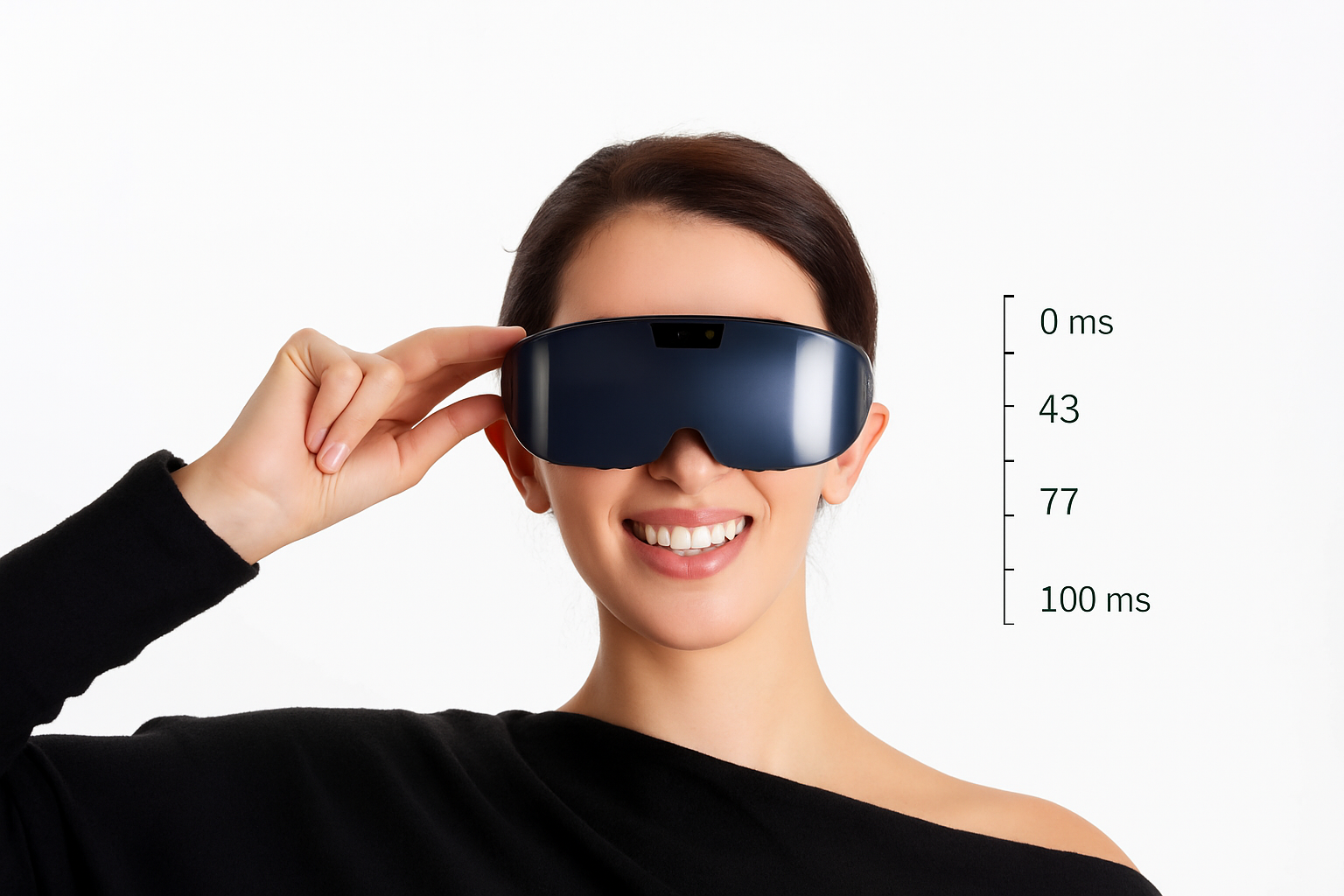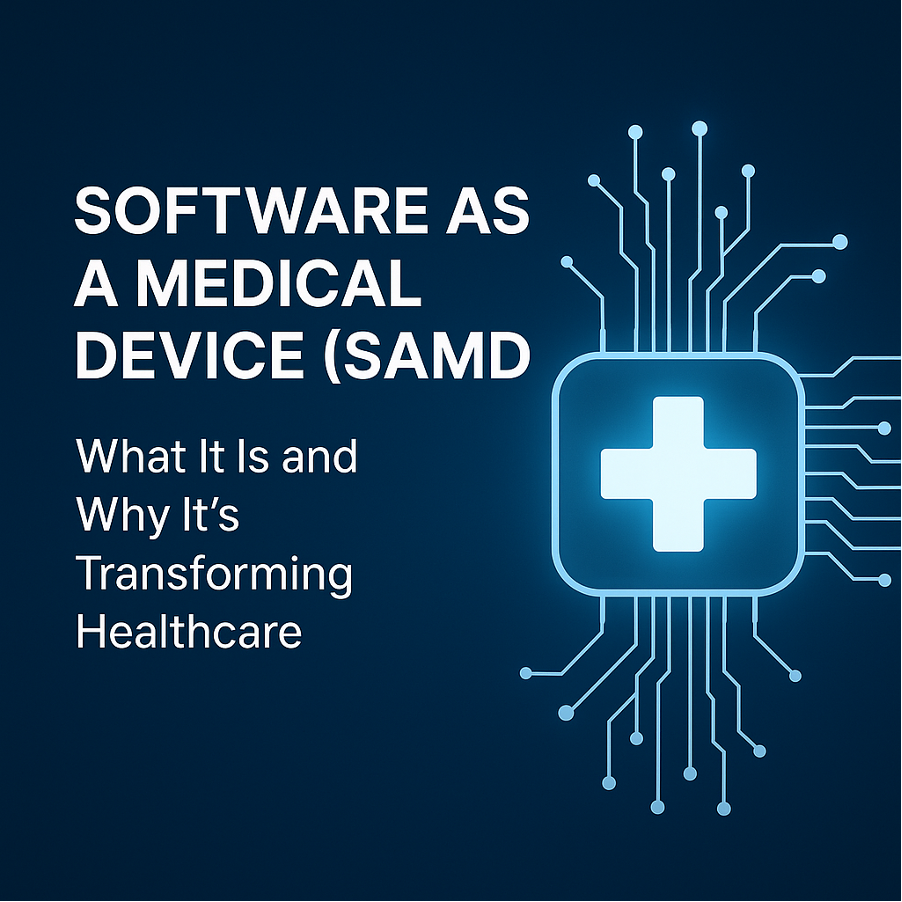Blog
Blogs
Choosing the Right Sampling Rate for Eye Tracking in VR Headsets
BLOG by

A technical analysis of how sampling frequency affects precision, performance, and system demands in eye tracking for VR applications
Introduction: Why Sampling Rate Matters in Eye Tracking for VR
An overview of why sampling rate is critical to the accuracy, responsiveness, and utility of gaze tracking in virtual environments.
Eye tracking in VR has become foundational to how users interact with virtual environments. From foveated rendering and biometric identification to behavioral research and accessibility tools, the accuracy and responsiveness of gaze data determine how effective these systems truly are. One of the most critical parameters influencing this performance is the sampling rate, which refers to how frequently the eye position is recorded over time.
Choosing the right sampling rate is not a binary decision. It requires evaluating trade-offs between temporal precision, computational demand, and the requirements of each application. A lower sampling rate may be sufficient for basic gaze estimation, but it can fall short in high-performance use cases such as real-time interaction or microsaccade analysis. In contrast, higher sampling rates improve data fidelity but place greater strain on system resources and processing pipelines.
This article examines how sampling rate influences the quality and reliability of eye tracking in VR, the computational implications for VR headsets, and how these choices should vary based on application. This piece draws on published research and product-level technical considerations to examine how sampling rate influences performance, accuracy, and system behavior in VR eye tracking
What Sampling Rate Means in the Context of Eye Tracking
A technical breakdown of how sampling frequency and sampling interval shape the accuracy and reliability of gaze data in VR systems.
In the context of eye tracking in VR, sampling rate refers to the number of times per second the system records the user’s eye position. This frequency is measured in Hertz. A device with a sampling rate of 60 Hz captures 60 gaze data points every second, while one operating at 120 Hz captures twice as many. The higher the rate, the more precise the temporal resolution of eye movement data.
This concept is tightly linked to the sampling interval, which is the time that elapses between each recorded data point. A 60 Hz tracker has an interval of roughly 16.67 milliseconds between samples, whereas a 120 Hz system reduces that to about 8.33 milliseconds. Shorter intervals allow the system to more accurately trace rapid movements, especially those that occur in short bursts such as saccades or microsaccades.
Sampling is inherently discrete. It does not capture continuous movement but rather a sequence of points in time. This introduces what’s known as temporal sampling error—the risk of missing critical eye movement details that happen between two samples. The longer the interval, the greater this risk becomes. For example, in systems with lower sampling rates, fast eye movements can begin and end entirely between samples, leading to a loss of data or mischaracterization of gaze behavior.

A widely accepted guideline for minimizing this error is to use a sampling rate that results in intervals shorter than half the duration of the event being studied. This ensures that even brief or fast eye movements are adequately recorded, reducing uncertainty in later analysis. As the field evolves, this relationship between event duration and sampling frequency is becoming a core consideration in both product design and research methodology.
How Sampling Rate Affects Accuracy and Precision of Gaze Data
Understanding how different sampling frequencies influence the detection and characterization of eye movements in VR environments.
The sampling rate of an eye tracker plays a central role in determining the quality of the gaze data it collects. At higher sampling rates, the system captures more data points per second, resulting in finer temporal resolution. This makes it possible to detect brief, high-speed eye movements such as saccades with greater accuracy and to measure their properties including onset, duration, and amplitude with higher precision.
For example, a sampling rate of 60 Hz produces a data point every 16.67 milliseconds. While this may be sufficient for identifying general fixation areas in user interface testing or casual gaming, it lacks the resolution required for detailed analysis of fast transitions in gaze behavior. At this rate, a short saccade that occurs over 20 milliseconds could be partially or completely missed, leading to distorted measurements or undetected events.
Raising the sampling rate to 120 Hz reduces the interval between samples to 8.33 milliseconds, significantly improving the system’s ability to detect saccades and to calculate their metrics more reliably. Comparative studies have shown that 120 Hz systems detect more saccadic events and report durations that more closely align with high-end 1000 Hz benchmark devices. This makes 120 Hz a practical threshold for many advanced use cases, particularly in research and precision-sensitive interactions.
Some research scenarios and biometric applications require sampling rates above 200 Hz to capture the full dynamics of micro-movements, such as microsaccades. These extremely short-duration movements may last just 10 to 30 milliseconds, making them difficult to analyze without high-frequency data capture. At 250 Hz or higher, where data is sampled every four milliseconds or less, it becomes feasible to track these movements in detail, opening up possibilities for cognitive load assessment, fatigue monitoring, and fine-grained behavioral analysis.
Sampling Rate Characteristics by Frequency Tier
Sampling Rate (Hz) | Sampling Interval (ms) | Eye Movement Support |
60 | 16.67 | Basic fixations only |
90 | 11.11 | Fixations, light saccades |
120 | 8.33 | Reliable saccade detection |
200 | 5.00 | Small saccades, rapid shifts |
250+ | < 4.00 | Microsaccades, detailed timing |
The relationship between sampling rate and eye movement fidelity is also governed by the Nyquist theorem. According to this principle, accurately capturing a signal requires sampling at a rate that is at least twice the frequency of the event. In the context of eye tracking, if the system is intended to measure saccades lasting 20 milliseconds, the sampling interval should be 10 milliseconds or shorter. This implies that a minimum sampling rate of 100 Hz is necessary to achieve valid detection and timing.
It is important to distinguish between temporal and spatial accuracy. While higher sampling rates improve the timing and detection of gaze events, spatial accuracy is also influenced by factors such as hardware calibration, sensor quality, headset fit, and user physiology. These aspects must be considered in parallel to make full use of the benefits that increased sampling frequency can provide.
Computational Impact of Higher Sampling Rates
Evaluating how increased sampling frequencies affect processing, memory, and real-time system performance in VR environments.
Increasing the sampling rate of an eye tracking system improves data quality, but it also introduces significant computational overhead. Higher sampling frequencies generate more data per second, which must be stored, transmitted, and processed in real time. This creates additional demand on both hardware and software, especially in VR headsets that operate with fixed power and performance budgets.
Each new data point captured by the eye tracker adds to the total volume that must pass through the gaze processing pipeline. In real-time use cases such as foveated rendering, biometric tracking, or gaze-based navigation, this means the system must process a higher frequency of gaze data with minimal delay. The gaze pipeline typically includes tasks such as coordinate mapping, signal filtering, event detection, and downstream integration with rendering or interaction engines. When the sampling frequency increases, every step in this chain must operate faster and more efficiently.
Storage requirements grow with sampling rate as well. At 60 Hz, a ten-minute recording produces a manageable dataset. At 250 Hz or 1000 Hz, the size of that same recording grows exponentially, especially when tracking both eyes and logging auxiliary metadata. In long research sessions or training simulations, high-frequency sampling can quickly exceed buffer capacity or lead to dropped frames if the system cannot keep up with write speeds.
Higher sampling rates also increase power consumption. Sensors need to operate at faster intervals, and processing units stay active for longer periods without rest. In wireless or standalone VR headsets, this can impact battery life and generate additional heat, which must be managed through hardware throttling or thermal balancing. Some manufacturers address this by offering variable sampling modes. For example, a headset may support both 100 Hz and 200 Hz modes, giving developers control over how much processing to allocate based on the needs of the application.

These resource demands often force system-level trade-offs. To accommodate high-frequency eye tracking, developers might reduce display resolution, limit background processing, or allocate dedicated cores for gaze handling. The architecture must be carefully balanced to ensure that improvements in gaze precision do not come at the expense of frame rate stability or overall user responsiveness.
Some eye tracking systems are exploring adaptive sampling methods that raise the frequency only during high-velocity eye movements and reduce it during prolonged fixations. This approach helps reduce unnecessary processing but introduces complexity in event prediction and timing synchronization. If implemented poorly, it can result in missed transitions or delays in gaze-driven responses.
Selecting a sampling rate is not simply a technical setting. It is a design decision that affects multiple layers of system architecture, from sensor behavior to heat dissipation. For enterprise VR applications, this decision must align with both the experience goals and the underlying platform’s ability to maintain consistent performance under load.
Influence of Sampling Rate on User Experience in Virtual Environments
Exploring how sampling frequency shapes responsiveness, latency, and user comfort in VR systems.
Sampling rate plays a critical role in shaping the user experience of eye tracking in VR. While it is often viewed as a technical setting, it has direct effects on how natural and responsive a VR application feels. The frequency at which gaze data is captured can influence perceived latency, the fluidity of interactions, and even the risk of discomfort during extended use.
In gaze-contingent systems, latency refers to the time between a user moving their eyes and the system reflecting that change on screen. This chain includes image capture, processing, interpretation, and rendering. A higher sampling rate shortens the time between gaze updates, which helps reduce overall latency. More frequent updates allow the system to respond more quickly to micro-adjustments in gaze direction, which contributes to a more reactive and immersive experience.
Responsiveness is not only about speed, but also about smoothness. In a low-frequency system, visible lags can occur when the user shifts their attention quickly. Gaze-based menus, object selection, and foveated rendering may feel jumpy or inconsistent. A higher sampling rate reduces this friction by offering a more continuous and reliable stream of input data. The result is a system that feels more intuitive and requires less conscious correction from the user.
User comfort is another important factor. Although display refresh rate is the primary driver of motion sickness and visual fatigue, the alignment between display updates and gaze data matters. If the eye tracking system lags behind the user’s actual eye position, or if it misinterprets fast gaze shifts, it can create a mismatch between visual and vestibular signals. This sensory inconsistency is a known trigger for discomfort in VR. Accurate, low-latency gaze data helps create a more stable visual world that aligns better with natural head and eye movements.
There is also emerging evidence that eye tracking can be used to detect early signs of motion sickness. Subtle changes in blink rate, fixation stability, or microsaccade frequency may serve as indicators of visual stress. Systems with higher sampling rates are better positioned to capture these signals before symptoms become severe. This opens up the possibility of adaptive VR systems that respond to user fatigue by adjusting scene complexity or brightness in real time.
Importantly, the benefit of high-frequency eye tracking depends on how well the rest of the system can support it. If the gaze input is sampled at 200 Hz but the display only refreshes at 60 Hz, the gains are limited. A mismatch between input and output rates can introduce bottlenecks or require interpolation techniques that may reduce accuracy. Ideally, sampling rate and refresh rate should be matched or harmonized to maintain consistency across the full user interaction loop.
From a product design standpoint, this reinforces the need for balanced systems. High-quality eye tracking is most effective when it is part of a well-integrated VR platform, where latency, frame rate, rendering speed, and user interface design are tuned together. Sampling rate is one part of that system, but it plays a foundational role in making the experience feel reliable, reactive, and comfortable.
Recommended Sampling Rates for Gaming, Research, and Accessibility
Guidance on selecting appropriate sampling frequencies based on the specific goals and performance needs of different VR applications.
The ideal sampling rate for eye tracking in VR depends heavily on the use case. What is considered sufficient in one context may be inadequate in another. Understanding the performance demands of each application category is essential when choosing a sampling frequency that balances data quality, computational cost, and user experience.
Gaming and Real-Time Interaction
In gaming, where responsiveness and visual accuracy are central to the experience, higher sampling rates offer clear advantages. Fast-paced interactions such as aiming, navigation, and real-time gaze-based selection benefit from lower latency and more reliable tracking. A sampling rate of at least 120 Hz is generally recommended in this context. For headsets with display refresh rates of 90 Hz or 120 Hz, pairing them with eye tracking at a similar frequency ensures that gaze updates occur in sync with frame rendering.
Scientific and Clinical Research
Research applications require a more nuanced approach. For studies that focus on fixations, such as visual attention mapping or interface usability testing, a sampling rate of 60 to 90 Hz may be sufficient. In contrast, studies involving saccades or microsaccades demand much higher temporal resolution. These movements are rapid and short-lived, often requiring rates between 120 to 250 Hz or more to be measured accurately.
Accessibility and Assistive Technologies
In accessibility-focused applications, such as gaze-based control interfaces for users with limited mobility, a sampling rate between 30 and 90 Hz is typically appropriate. This supports stable fixation tracking and interaction without excessive computational load. Simpler gaze interfaces benefit more from consistency and ease of calibration than from high temporal fidelity.
Application Type | Recommended Sampling Rate |
Gaming | 120 Hz or higher |
Research – Fixations | 60 to 90 Hz |
Research – Saccades | 120 to 250 Hz or higher |
Accessibility | 30 to 90 Hz |

Emerging Trends in Eye Tracking Technology and Sampling Optimization
Advancements in hardware, algorithms, and system design that are shaping the future of sampling rate decisions in VR eye tracking.
The field of eye tracking in VR continues to evolve, driven by improvements in sensor technology, real-time processing algorithms, and system-level integration. As these technologies mature, the way sampling rates are selected and managed is shifting from fixed parameters to dynamic, adaptive, and context-aware configurations.
One of the most significant trends is the development of high-speed, low-noise sensors that operate at higher frequencies without proportional increases in power consumption or heat generation. These improvements make it feasible to integrate high-frequency eye tracking into smaller, untethered headsets without compromising thermal or battery performance.
Algorithmic efficiency is also improving. Machine learning and signal processing techniques are being applied to compress, interpret, and classify eye movement data with greater speed and accuracy. Predictive eye tracking, dynamic sampling adjustment, and synchronization with display refresh rates are all converging into smarter systems that can deliver better performance without unnecessary resource usage.
As displays push past 120 Hz and gaze-based interaction becomes more integral to navigation and rendering logic, high sampling rate support will become not just a premium feature, but a core design requirement. The ability to match gaze dynamics with hardware refresh cycles and predictive rendering pipelines will define the next generation of responsive, immersive VR systems.
Conclusion: Balancing Accuracy, Performance, and Application Needs
Choosing the right sampling rate is a design decision that defines the quality and feasibility of eye tracking in VR.
Sampling rate is one of the most impactful variables in the design and deployment of eye tracking systems for virtual reality. It affects not only the accuracy and precision of gaze data but also the computational load, responsiveness, and overall user experience. While higher sampling rates offer more detailed tracking and lower latency, they also introduce technical constraints related to processing power, battery life, and system complexity.
The ideal sampling rate is not a universal constant. It must be selected based on the specific demands of the application. In gaming and real-time environments, 120 Hz or higher is often needed. In research, even higher rates may be justified. In accessibility use cases, stability and efficiency often take priority.
As eye tracking technology matures, sampling rate decisions will increasingly involve both hardware and software layers. They will be informed by adaptive algorithms, predictive models, and tighter integration with rendering and input systems. For enterprise VR systems to deliver on their promise, sampling strategy must be treated as a core element of design, measured, purposeful, and aligned with both capability and intent.
About the Author
Content Writer
Related blogs
BLOG
BLOG


